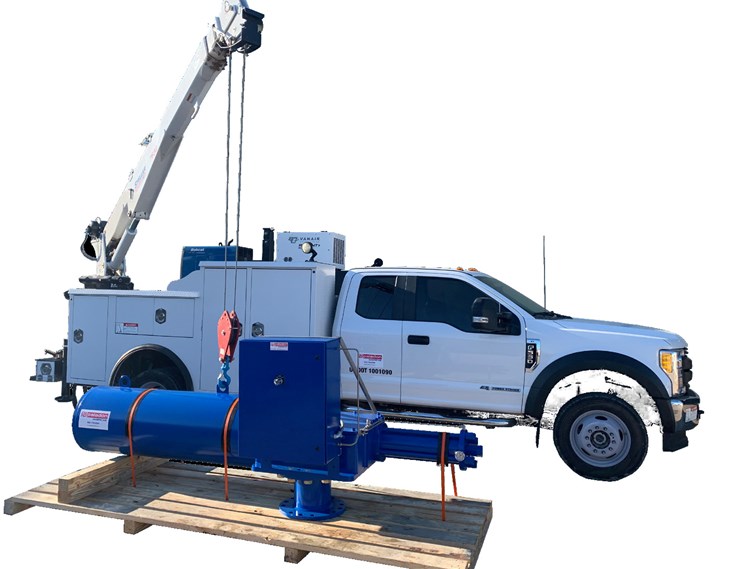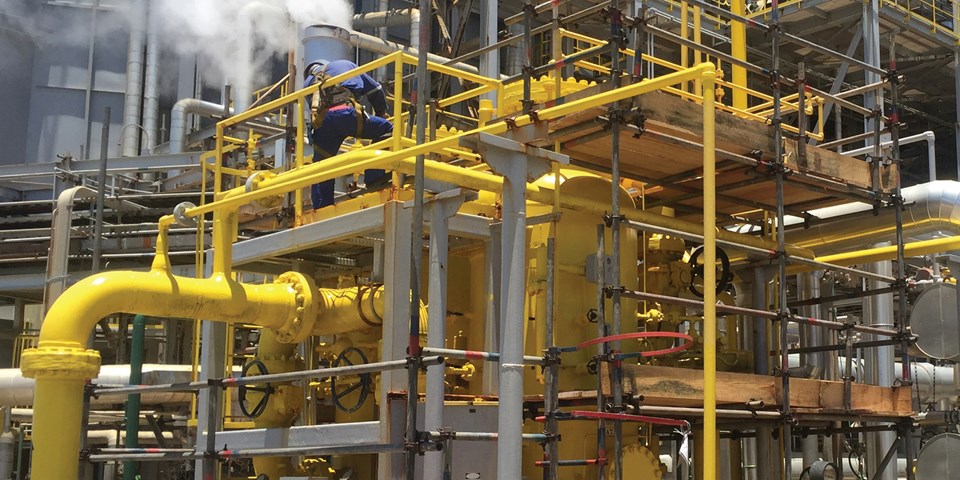Valve World Americas Journal had the pleasure to speak with Rafael Souza in São Paulo, Brazil about emission regulations, material selection methods, recent project developments and his insight on the future of the industry.
By Stephanie Matas & João Carlos Vitorino, Eng, MBA, Consultant
Souza has experience working on both large and small-scale projects – from mining to energy, to civil work projects for the government and more. Souza’s first project was in an aluminum oxide plant (alumina) in the Pará state, a mining area in northern Brazil, which was the largest alumina refinery in the world. He commented that for the first seven years of his career, the most important clients were Petrobras – for refineries, and Vale – in mining plants. “For big projects with Petrobras and Vale, we employed a team to design the whole plant, which we would then share into Mechanical, Electrical, Civil, Piping, Process and Instrumentation groups. The project would also include the Supply Chain team that was responsible for buying, expediting, inspection and delivery of the equipment, and the management team that supervise all the project team and control the scheduling and costs,” he said. Souza mentioned it was very common with larger projects to purchase specific equipment from overseas.
Before 2012, the engineering sector was thriving in Brazil. Companies were able to execute large-scale projects. After the recession in 2014, the companies found themselves with a new challenge in diversifying its portfolio and working in smaller projects, but with greater conceptual and design demands. “There is something great about small projects, because when you have a big, two-year timeline, you have the capability to monitor everything from the first step – from conception to designing the entire plant. We often used the phrase, ‘when you are thinking, you are structuring’, after-the-fact is just production – what to buy and how to maintain diligence with our suppliers. Now with focus almost exclusively on small projects, most of which are conceptual, the work is very interesting and intellectually stimulating,” Souza said. “No matter the project, time is the most challenging aspect of my job. We start talking about one project and then we move on and start talking about another project right after, so time is always of the essence.”

Emission Testing & Digitization
For all projects, the engineering firm would conduct a dispersion study of all pollutants. They study the pollutants from the stacks as well as NOx (Nitrogen Oxides) and SOx (Sulphur Oxides), which is a particularly important factor of regulation in thermoelectric. “All the equipment in operation must be continuously monitored and must follow CONAMA 382/2006 regulations. However, once we complete the project, maintaining the proper operation becomes the client’s responsibility.”
Digitization and the Internet of Things (IoT) is another important development affecting emission testing procedures. “We are studying IoT a lot – working to develop new technology with advanced sensors that allow you to monitor valves remotely. There are so many new possibilities since the technology is evolving so rapidly.”
Another important technology Souza noted is initiatives with IoT and BIM (Building Information Modeling). BIM allows engineers to create 3D models of the facility using computer software and Souza said it has become increasingly more common in the past few years. “The difference now is that we are inserting the technical data of equipment on these 3D Models, rather than at the plant itself. All equipment requires a computerized ‘Digital Twin’ that holds the exact the same specifications as the real plant. It is not always easy because you must consider factors like maintenance, and inaccurate data.” Souza said the BIM technology is used for all new projects at the firm. “With 3D BIM models you can study any changes on the equipment, analyze the data, improve the process workflow and optimization performance of the team to determine best practices.”
Souza commented that the benefits of digitization far outweigh the negatives. “For instance, with fugitive emissions monitoring (consisting of monitoring and controlling possible leaks of toxic fluids), which always is a very severe subject, you are now able to detect any variation. There will be issues with maintenance, so IoT is very beneficial to help you better understand the degradation and life cycle of any equipment in safety. We maintain better control and conduct more studies and tests that would not be possible without this technology,” he said. Souza mentioned the improvements to industrial IoT technologies used in the engineering field are much the same as recent improvements made to our mobile phones. “If you ask anyone today of what the advantage is of having smart phone rather than a regular phone, the benefits are endless. When everything is digitalized, you can search more, study more and explore different applications that ultimately make you more informed at whatever it is you do.”

The engineering firm also utilized Artificial Intelligence (AI) for analyses. Data collected in the field is transferred to a computer in a digitized format so it can then be uploaded for use by the AI. “The company was recently involved in an important project for an ethanol plant for the COSAN/RAIZEN Company, which is the largest ethanol energy producer in the world. The ethanol plant was interesting because we worked with sugarcane bagasse for second and third ethanol generation processes, where we also used the sugarcane bagasse to generate more energy—and this bagasse was not regular/homogeneous. It was quite difficult to design the equipment and to adjust the plant to produce the correct quantity of energy because the raw material was not common. Because of this, we needed to adjust the plant accordingly and it led to the development of an internal software program.”
Souza noted that as the engineering firm had been working with ethanol plants for so many years, many have already reached a high-level of digitalization, which makes it possible to optimize the production of energy though the AI software. “For this AI Software, we harnessed MIT’s (Massachusetts Institute of Technology) expertise and sent three engineers there to learn about Artificial Intelligence.”
When asked how AI is used in valve testing and monitoring, Souza said, “To analyze the output of emissions on valves we can use artificial intelligence because if you have problem with a valve, you can identify quickly the issue using sensors around the plant.” This allows the company to make informed decisions on changing the type of valves being used in order to maximize profits and operational efficiency for their client. In a thermoelectric plant, valves are used for turbine bypass and stacks, which are very big.
The company also monitors many steam lines and valves related to the specific client application at hand. “There are two worlds: the project of the plant and the operation of the plant. Most of the optimizing analysis is done during operation, and operation is not in our company’s scope.”
To assure their engineers receive well-rounded knowledge, an operational thermoelectric plant was constructed to allow engineers to learn hands-on, how to conduct testing on site and fully operate a plant.

Bridging the Knowledge Gap
For young professionals entering the engineering industry, Souza offered a few key pieces of advice: “Keep the curiosity – be curious all the days of your life! Keep learning, and always keep expanding your horizons! I think that having the ability to learn is more important than a lot of knowledge.”
Souza said a lot of his inspiration stems from industry publications like Valve World and Pump Engineer, with particular interest in articles that focus on specialty valves and large pumps used for thermoelectric applications.
“The industrial world is changing very fast. We learn a lot from young engineers, especially with new technology, but the old knowledge of working with equipment remains important and relevant. Existing engineers like myself know a lot of details about equipment that young engineers are not allowed to work with, because they simply do not have the time—it is all moving fast so sometimes people need to slow down and learn the details.”

A Lifelong Passion
When asked what continues to draw him to the world of engineering, he said, “I always wanted to be an engineer from childhood. Even after so many years I am still constantly learning because there will always be technical challenges. You can always learn about something new and different; I love this engineering world!”
MEET THE EXPERT
Rafael Vieira de Souza is Brazilian, born 1984 in the city of Guarulhos. In high school he was awarded at the State Math and Physics Olympics. He did the technical courses of in Machining by SENAI and Aeronautical Mechanics by CEPHAS. He holds a Bachelor’s degree in Mechanical Engineering from the Polytechnic School of the University of São Paulo (POLI – USP) with a postgraduate degree in Industrial Valve Design by the same University and Specialization in Industrial Automation from the Faculty of Engineering of the University of Porto (FEUP – Portugal). During college, he was awarded Best Consulting by POLI Jr with the project of implementation of a work safety department in a Mechanical industry and he won the USP’s Innovation Olympics with a business plan for an infusion pump. At Promon Engenharia he participated in important strategic projects such as process mapping, SAP implementation and was a member of the technological observatory and participates in volunteer programs with school reinforcement in mathematics and physics. He has courses in Project Management, Negotiation, Industrial Tank Design, Design of Pressure Vessels, Air Conditioning Systems Projects, among others.



